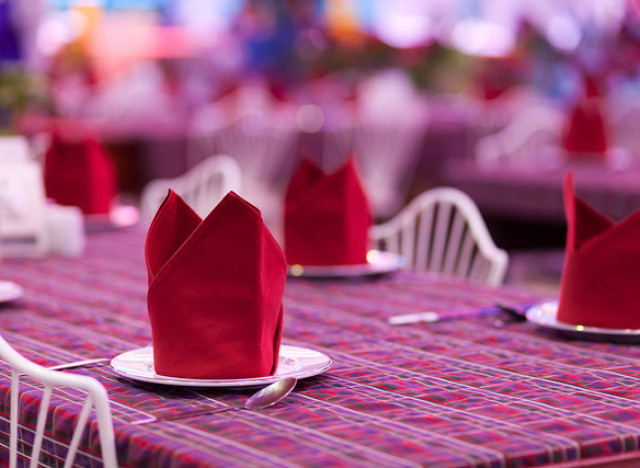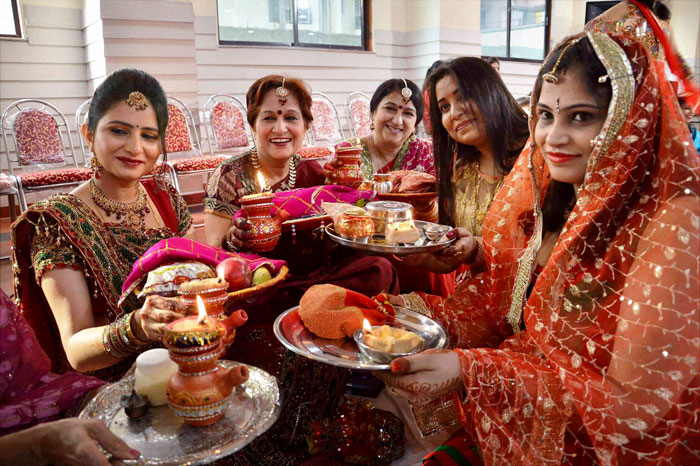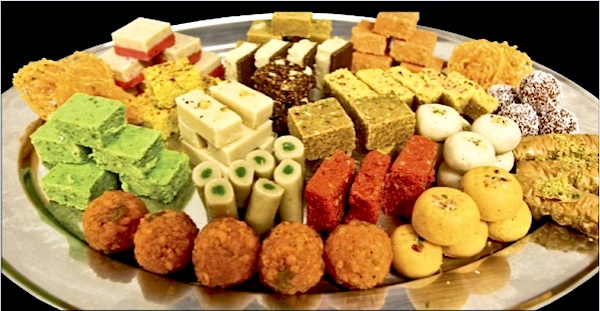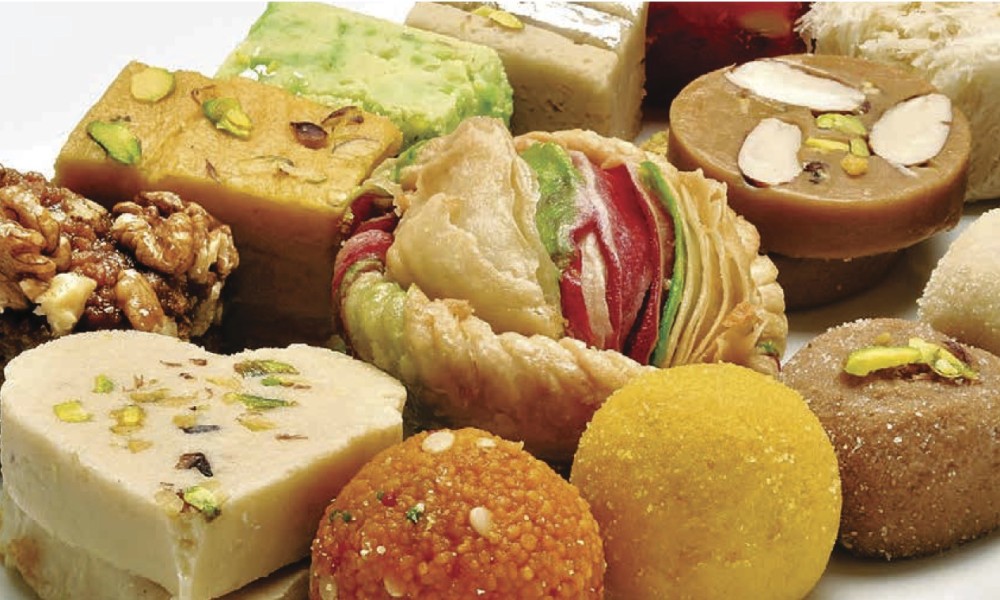About Napkins
Cloth napkins come in several sizes, each size tailored to a specific use. A beverage napkin, used when serving drinks and hors d oeuvres, like most cloth napkins, is square, about five inches to each side. A luncheon napkin is a couple of inches larger, and a dinner napkin larger still. The theory, evidently, is that the more food and drink that is served, the more potential there is for spillage, so the bigger the napkin must be to catch it.
Cloth napkins may be purchased in a rainbow of colors and a variety of fabrics, imprinted with custom designs and monograms, and can even come with matching tablecloths. However, a high-thread-count, white, linen or linen-cotton mix damask napkin is still considered the zenith of elegance.
Though a wedding reception should be considered a formal occasion, only the very wealthy can afford to have a catered meal for scores of guests, one that is served on fine place settings where cloth napkins have been set out. An acceptable cost-cutting compromise for big celebrations including weddings is to use a paper napkin whose size, heft, and finish resemble a cloth napkin. They can be ordered embossed with the bride and grooms monograms or otherwise tailored to the buyers specifications.
Napkin Etiquette

Whether the napkin is cloth or paper, when in polite company, a napkin is to be used with a measure of etiquette, so as not to offend other diners through a display of boorishness. (You’re excused from these rules only when the napkin you are offered is one of those flimsy little paper things that pop out of tabletop dispensers the kind of napkin you cannot place on your lap expecting it to not blow away within 20 seconds; even here, however, try to keep boorish behavior in check.)
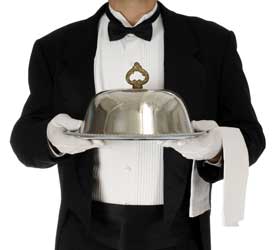
Rule 7: The place for a napkin? In your lap. It is not tucked into your pants, nor does it belong tucked into your shirt collar. However, if you are in a milieu where that kind of behavior is acceptable, don’t be afraid to go along. For example, diners from Southern Italy (or southern New Jersey) have long known that a bowl of spaghetti topped with marinara sauce can be better enjoyed when you don’t have to worry about the red stuff splattering on your shirt. Many Italian and Italian-American diners therefore tuck the napkin into their collars as a matter of course. Feel free to do the same. Live! Enjoy!
But what about that waiter who carries a napkin draped over one arm? In part, its practicality. Its readily available to mop up any accidental spills or other messes at your table. But the practice dates back a couple of hundred years in France; that was how waiters carried the napkins they would distribute to diners. Napkins have been in use for thousands of years.
Its possible that cavemen at their woolly mammoth barbecues wiped the grease from their mouths using the animals pelt… and then rubbed it in their hair to get that suave, slicked-back look. But we don’t really know that. What we do know is that, by the Bronze Age, its likely something like a napkin was in use in many parts of the world. The first recorded use of the napkin was by the Romans. When that hearty eater, Buffetus Allucaneatus, reached for his napkin at the Roman dinner table, he didn’t find a cloth. What he used was some wadded up unbaked dough, which he pressed to his face. That removed whatever bits and morsels of food were sticking to it. Later, if he wished, he could bake and eat his napkin, morsels and all.
With the fall of Rome, Europe entered that slovenly, napkin-less period of the Dark Ages, with its uncouth barons and unwashed princesses wiping their hands on their tunics and mopping their faces with their shirttails and cuffs. We don’t know how knights encased in steel armor managed to wipe off their mouths.
Source: http://www.napkinfoldingguide.com/


